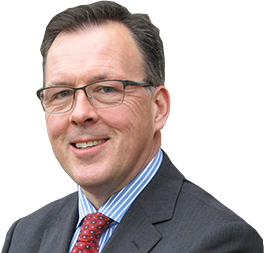search
date/time
 | Lancashire Times Weekend Edition |

Andrew Palmer
Group Editor
1:05 AM 4th November 2023
arts
An Artistic Jewel In The Heart Of Madrid - The Museo Nacional Del Prado

The Prado
Photo: Graham Hermon

Photo: Graham Hermon

Room 14, Crucified Christ, Velázquez ©Museo Nacional del Prado
Would I be inspired after finally making my pilgrimage?

Neptune Fountain
Photo: Graham Hermon
There was Spain’s revered artist Goya, described as one of the last of the Old Masters and one of the earliest of the modern artists, looking directly to the entrance. The unassuming building and entrance belie the treasure trove that is behind the brick exterior, and as one enters to explore the labyrinths that take the visitor on an exploration of the Prado’s 100 rooms, the true extent of the wealth of cultural and art history chronicling centuries of artistic splendour is realised. It is the equivalent of stepping into Dr Who's Tardis and being transported through different epochs.

Final part of the main gallery of the Prado with The Family of Charles IV by Goya at the far end
©Museo Nacional del Prado
With so much to take in a full day is needed. The layout of the galleries offers space to think, contemplate, and reflect. There is a surprising hush as people look in awe at some of the exhibits. The gallery becomes intimate; only the viewer and the artist are present as the world is drowned out by the expressive white noise that surrounds the body, protecting it from intrusion as each piece of art is explored in communion with mind and place. The simplicity contradicts the intricacy that each painting, drawing or sculpture offers.

The Garden of Earthly Delights -
El Bosco Oil on panel, 220 x 389 cm
1500 – 1505
© Madrid, Museo Nacional del Prado
The curator of this exhibition writes, ‘Every image we create is a mirror that reflects a way of seeing. We look at the world and at others in relation to ourselves, through our own mentality and attitude. Using a broad selection of works, this exhibition recreates a mediaeval mirror that shows how Jews and conversos (converts to Christianity) were portrayed by Christians in Spain from 1285 to 1492.’
A powerful reminder of the sufferings and ordeals of today.

Goya Galleries, Majas
©Museo Nacional del Prado
The gallery of portraits and self-portraits was so realistic, each contour of the face so vivid, the eyes pulling you into the painting. Amalia de Llano y Dotres, Countess of Vilches’s pale face and smile have a straightforwardness and attractiveness.
The 19th-century paintings are a must, and the day I visited they became my favourite, but that might change the next time I visit. The feelings in one gallery are ephemeral; by the next, something else has caught the eye, and that becomes the preference.

Room 60A, XIXth Century, Sorolla ©Museo Nacional del Prado
Then, of course, there is the Mona Lisa. What! I hear you shout - you are in Madrid not Paris.
This version of the Mona Lisa (Louvre) was painted by one of Leonardo’s pupils: ‘The fact that each pentimento, or change, in Leonardo’s original (to the bust, outline of the veil, and position of the fingers) is repeated here suggests that the two works were created simultaneously. There are also differences with respect to the original, in the unfinished landscape and on the face. Overall, the panel seems to reflect an intermediate stage in the creation of the Louvre painting.'
This year marks the 150th anniversary of the death of Eduardo Rosales (1836–1873), and the museum boasts the largest existing collection of his works, comprising 100 drawings and 26 paintings. These pictures together provide a complete survey of the artist’s career, covering his forays into various genres and highlighting a modern approach that was to influence later Spanish painting.
One last word: the statues are impressive, especially the eight marble statues of seated muses. They were unearthed at Hadrian’s Villa in the 1500s and made at the end of Hadrian’s reign by two Roman workshops reproducing Greek models from the 2nd century BC. The seated muses decorated the scenae frons (stage) of the odeon, a small theatre that could have held around 1,200 people.

The Muses Gallery
©Museo Nacional del Prado
It is impossible not to leave without a glance back, as they hold you in their grip and force you to muse on creation.
Before too long, one hour has become two, then three, and so on, and it is time to step back into the reality of Madrid. The memories, however, linger.
Through art, we glimpse at the wonders of our ancestors, we imagine, we develop our cultural identity, and we refresh our body and spirit.
The Prado delivers all this and more, and yes, I was inspired and will return again, for as John Keats so aptly wrote:
Beauty is Truth, Truth Beauty.'– that is all / Ye know on earth, and all ye need to know".

Jerónimos Entrance ©Museo Nacional del Prado
https://www.museodelprado.es/
Opening Hours:
Monday to Saturday from 10am to 8pm
Sundays and holidays from 10am to 7pm
Closed January 1st, May 1st,
December 25th
Limited Opening Hours
January 6th, December 24th and 31st
From 10am to 2pm
Free Access
Monday to Saturday from 6pm to 8pm
Sundays and holidays from 5pm to 7pm
Exhibitions:
From the pen to the burin. The drawing to record in Goya's time 17/10/2023 - 14/1/2024
The Lost Mirror. Jews and Conversos in Medieval Spain 10/10/2023 - 14/1/2024
Eduardo Rosales (1836-1873) in the Prado Museum
until 29/1/2024